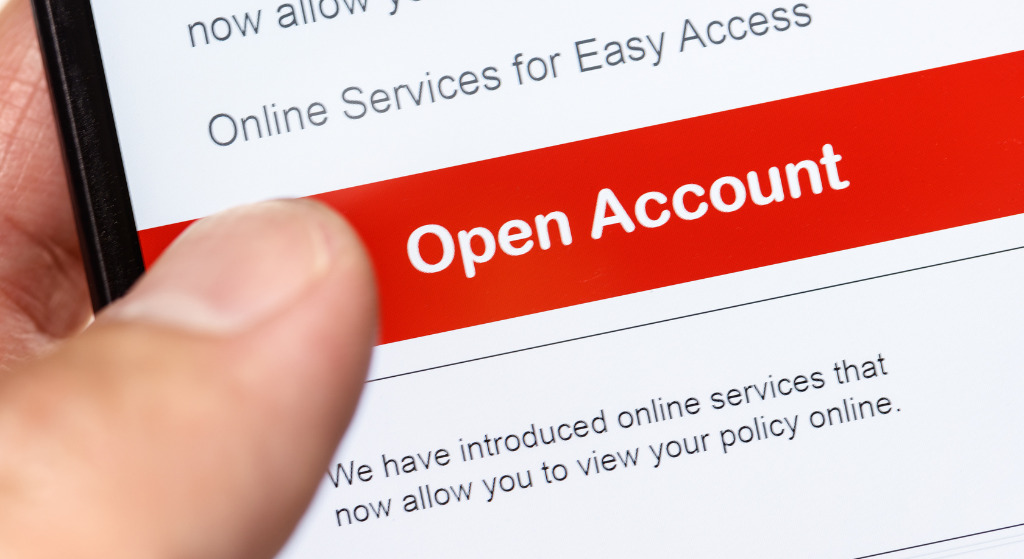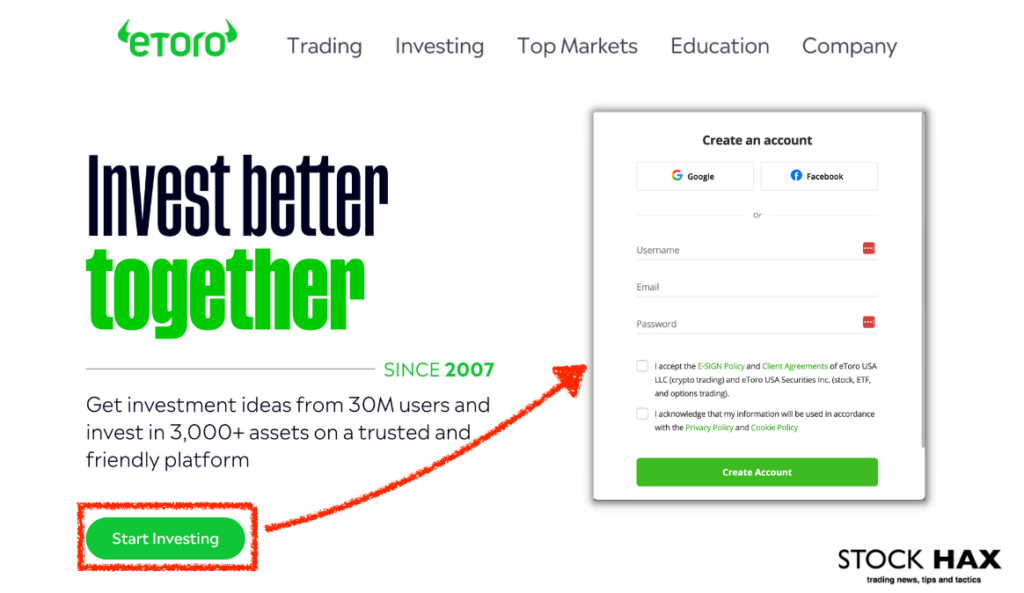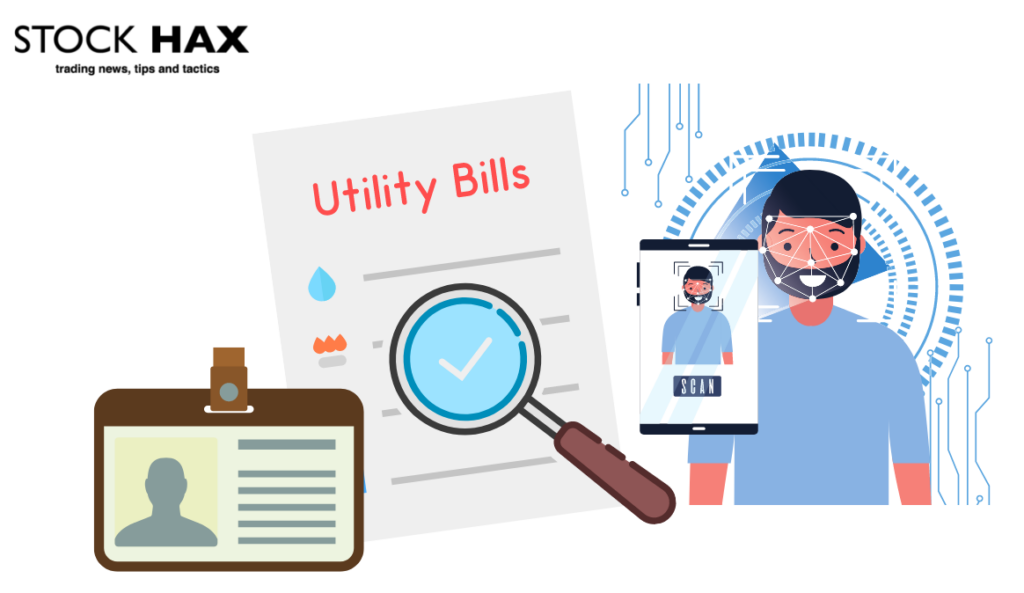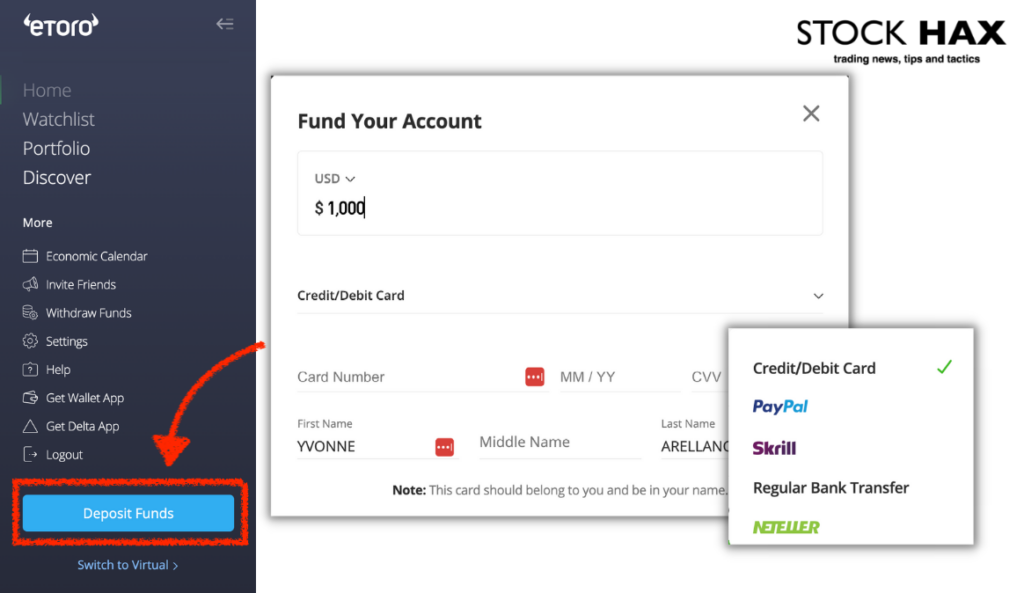This website and its content are not intended to provide professional or financial advice. The views expressed here are based solely on the writer’s opinion, research, and personal experience, and should not be taken as factual information. The author is not a financial advisor and lacks relevant certifications in that regard. We highly recommend consulting a qualified financial advisor before making any investment decisions, as the information presented on this site is general in nature and may not be tailored to individual needs or circumstances.
A brokerage account is an account open with a brokerage firm that allows you to buy and sell different financial instruments.
In a nutshell, brokers give you access to financial markets and autonomy to manage your investments and trades. Moreover, online brokers are sophisticated enough to provide you more than access to markets, like financial news and data on companies and projects that issue financial instruments, price charts and more. Brokers are all-in-one tools you can use to manage your trading and investing activity.

In this guide, we will cover all the information you need to open a brokerage account and how to use it.
From reliability, to the different account types, to funding your account, you’ll find everything you need to know to start trading and investing with a broker in a safe environment.
Choosing the Right Brokerage
Since brokers are so important for the trading and investing activities of traders and investors around the world, it is pivotal to choose the broker that better fits your needs and, at the same time, has features that any reliable broker should have.
Reliability is actually one of the factors to take into account when choosing a broker. A reliable broker is transparent and secure, provides its users with all the information they need — not only for what concerns the functioning of the broker, but also for what concerns the different licenses and policies it applies. A reliable broker is also regulated: all the companies that offer financial services need to comply with the regulations of the countries where they operate, and complying with these regulations require them to prove that they follow the rules and keep their services compliant over time.
Moreover, a reliable broker manages to build a strong reputation among its users — who then usually spread the word thanks to reviews.
Among the other elements to evaluate before choosing a broker we can find:
- Variety of account types – we will see later, in detail, what are some common types of accounts, but for now, consider that the different needs and financial goals of traders and investors should be reflected by different accounts made available by the broker.
- Fees and commissions – brokers charge different types of fees and commissions. They might be necessary for keeping the broker compliant, to manage the accounts of users, to provide additional documentation a user might need – for example, for fiscal purposes. Since today there’s a large variety of brokers and the market is very competitive, it won’t be hard to find brokers with low fees and commissions — but always pay attention to transparency, since you should know exactly what you pay and why.
- Platforms and tools — good brokers offer intuitive platforms, great brokers offer more than one platform. This might be necessary to meet the needs of traders and investors with different skills and experience. For example, eToro offers pro charts to those who want to read more detailed data, while Robinhood provides a paid subscription for the same reason. Brokers like Charles Schwab are even more complex, offering users tools that can be customized and different versions of trading platforms that can be used from any device, online and offline. The more tools a broker provides, the more informed your decisions will be.
- Customer service. Here we have a pivotal element to consider, since traders and investors who should not have problems while investing and trading, need the opportunity to solve any possible issue easily and fast when it arises. Customer service should be responsive and exhaustive, and dealing fast and professionally with any possible issue concerning the tools provided by the broker or the accounts of its users. Moreover, customer service is pivotal when it comes to keeping accounts secure.
Understanding Different Types of Brokerage Accounts
As we mentioned, there are different types of accounts a broker can offer, in order to meet the needs of different traders and investors.
To mention the most common:
- Individual accounts: these are the accounts usually opened by individual traders and investors. They don’t provide tax advantages (as other types of accounts we will see in a while), but give you full control over your activity.
- Joint accounts: these are managed by more than one investor, for instance, when a couple wants to manage a single account can open a joint account. Of course, they don’t give the same autonomy of individual accounts, but they might become a necessary solution in particular cases.
- Custodial accounts: these are usually opened when an adult wants to start a brokerage account for a minor. In this case there are restrictions on how the funds can be used — since the person who opens the account is just the keeper and the real owner of the account needs to be of legal age to have full control of the account, but it can represent an efficient way to save money for children.
- Retirement accounts, like IRA and 401(k), involve stricter rules concerning deposits and withdrawals, but give tax advantages.
It comes to each trader and investor to choose the right type of account, but this is possible only when the investor has a plan: a plan, based on realistic goals and the income of the individual, can lead to a specific choice, in line with the goals of the investor.
Step-by-Step Guide to Opening a Brokerage Account
We’ve already covered some of the information you need to know if you want to choose a broker, but let’s see how that works in practice.
For this purpose, we will use a specific broker as an example – eToro.
How to Open An Brokerage Account on eToro
Step 1: Open an Account
To open a new account on eToro, users can either visit the official website of the broker or download the app (available for Android and iOs).
Once they click the “Sign up” button, they will see an electronic form where they can enter their data – full name, username, email, password and mobile phone (that can be useful for verification purposes).
Alternatively, users can choose to sign up with Google or Facebook accounts. In any case, users must be of legal age, and should take the time to read the terms and policies of the broker before accepting them.

Step 2: Upload ID
The next step for completing the sign up process requires users to upload their ID.
This step is necessary to allow the broker to identify its users and comply with KYC (Know Your Customer) rules. These are designed to cooperate with regulators in case of illegal activity, and allows users to navigate the broker in a secure way.
Users can upload a proof of identity and address from their personal dashboard. Moreover, when a user signs up, he will be required to fill a questionnaire that allows eToro to assess the skills of the trader or investor, in order to offer them tailored services according to their experience. This represents an additional security measure taken by the broker to protect users’ funds.

Step 3: Make a Deposit
This step is the one that actually allows users to start trading and investing. eToro offers two types of portfolios:
- Virtual: this uses virtual funds but the functionalities are the same as the real account. This portfolio can be used to test strategies and get familiar with the platform without risking real funds.
- Real: the account that needs to be funded in order to make real trades and investments.
The real account can be funded in different ways – once the verification process is complete.
Users can deposit funds from the dashboard or directly from the pages of the different financial assets available.
The deposit methods offered by eToro can have different deposit times.
The instant deposit methods are the following:
- eToro Money: the payment method designed by eToro;
- Credit and debit cards;
- PayPal;
- Neteller;
- Skrill;
- iDeal;
- Klarna;
- POLi – available in Australia;
- Przelewy 24 – available in Poland.
The bank transfer is also available, but it will require up to seven working days to see your funds on your account.

Step 4: Search for The Stock
Now, users can explore the financial instruments offered by the broker or search for a specific stock they’re interested in.
By clicking the “Discover” button, users will find all the financial instruments divided by category – for example, stocks, indices, cryptocurrencies, commodities.
But if users are interested in a specific instrument, they can use the search tab.
In this case, users can type the stock and will get access to the stock page.

Step 5: Buy The Stock

Now, everything is ready to start trading and investing.
From the Stock page, users can buy the stock. They can set:
- Rate: users can choose market or limit orders;
- Amount: they can either choose the funds they want to invest or the number of stocks;
- Leverage: no leverage means that users directly own the stock, while using leverage implies that users are buying a derivative products;
- Stop loss – to mitigate losses;
- Take profit – if users want to set a specific amount to close the order.
Now, users can set the order.
Funding Your Brokerage Account
Funding your brokerage account is a necessary step to start trading and investing.

Usually (and this is a sign of reliability and compliance with regulatory frameworks) this step is available only once you verify your identity with your broker, prove to be of legal age and accept terms and conditions of the broker.
Different brokers provide different payment methods, but in general, these methods involve digital wallets, credit and debit cards, bank transfers.
Usually, credit and debit cards require higher fees, while bank transfers require more time to complete the deposit (it can take up to a week).
Getting Started with Trading
Once your account has funds, you can start trading.
Different brokers provide different tools to trade, but these tools always involve at least trading platforms and price charts.
There can be different types of orders, with different levels of complexity: the simplest order is the market order, which allows users to set orders at market prices; the limit order allows traders to set a specific price for their orders; stop orders allow users to automatically close an order if the conditions they set are met.
These are the most common types of orders available but, as mentioned, different brokers might offer even more complex types.
Tips for Managing Your Brokerage Account
Managing a broker account means not only managing your investments and trades (and rebalancing your portfolio when you think it’s time to do so), but also making sure of the correct functioning of the broker and monitoring your dashboard to keep track of possible profits and losses.
Moreover, reliable and regulated brokers usually need to update the information they have about their users. This type of communication is usually sent via mail and is available in the form of notification in your personal dashboard. Make sure to update or confirm information when required.
Conclusion
Opening and managing a broker account can seem an overwhelming activity: in this article we explained all the operations needed and the processes involved, but it’s important to note that today brokes tend to offer intuitive and fast methods to complete the registration, verification and funding procedures for each account — as we showed with our example using eToro.
If you’re interested in trading and investing, the broker you choose will play a pivotal role: make sure to set a plan and establish your goals, first, then you’ll be able to choose the broker that better meets your needs.
FAQ
What do brokers do?
Brokers allow people to buy and sell financial instruments – usually by providing intuitive interfaces and platforms, competitive fees and commissions. They carry out their activity according to the regulatory frameworks of the countries where they operate.
What assets can I trade with a brokerage account?
Brokers offer a wide variety of financial instruments. To mention the most common, stocks, indices, ETFs, CFDs, cryptocurrencies, commodities, currencies. Different brokers can offer different financial instruments – also according to any possible national restrictions.
How can I test my trading skills?
Best brokers offer demo accounts to allow users to test their skills without risking money. We used eToro as an example, and this broker offers a demo account in the form of a virtual portfolio.
StockHax strives to provide unbiased and reliable information on cryptocurrency, finance, trading, and stocks. However, we cannot provide financial advice and urge users to do their own research and due diligence.
Read More